Use these menus to test contact resistance
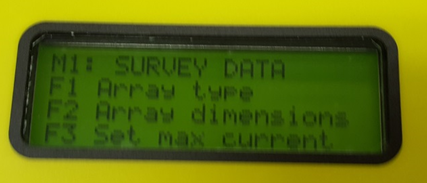
Turn on the instrument and confirm battery voltage is at least 12V
Press MEN to reach the main menu (M1 will be displayed)
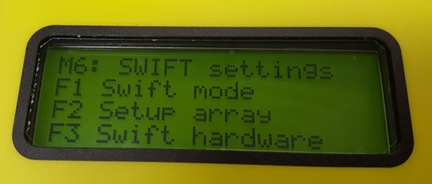
Press 6 to go to Menu 6 (M6 will be displayed)
Press F3 to get Swift Hardware
Press F1, enter #1, then press F3 for enter
Press F2, enter #2, then press F3 for enter
You now should have address 1 to 2 shown in the Swift Hardware
Press MEN to go back one menu (M6)
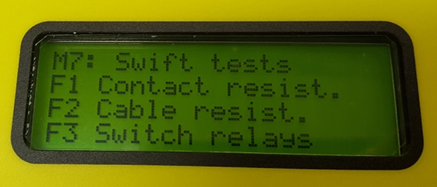
Press 7 to go to Menu 7 (M7)
Note: Make sure A and B posts are securely installed and connected to the electrodes you want to test. It is best to rotate all electrodes to the A and B post for this test to make sure contact resistance (ohm or V/I) is low enough so that signal to noise(S/N) is good. Contact resistance is a simple 2 point V/I value and is not to be confused with 4 point resistivity (ohm-m). Contact resistance influences current injection levels, measurement stability and received voltage levels(S/N error). A small amount (<1 cup) of water or salt water applied at each stake/earth interface is used to improve contact resistance. This small amount of water will not influence the 4 point resistivity (ohm-m) readings at typical field scales.
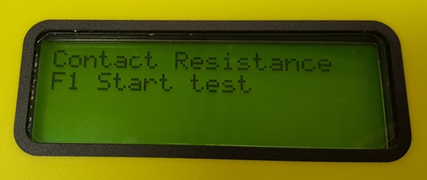
Press F1 for Contact Test
Press F1 to run the test
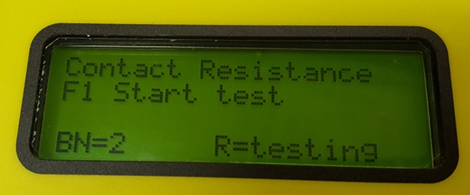
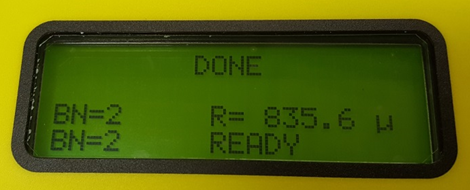
Results will be shown in ohm (V/I)
Ideally contact resistance will be a few hundred ohms and less than 5000 ohms. The CR value in the image above is not a typical field value because a resistor was connected to produce 835.6 micro ohms.
Some earth materials will be very high such as dry gravel and sand >5000 ohm. For high contact resistance soils, it is best to water the stake/earth interface with salt water or apply a small amount (<1 cup) of bentonite/salt slurry if the water drains too quickly. Or use what is called a foil pit.
Lowering contact resistance is the primary QA/QC procedure for earth resistivity methods. More details on how to improve contact resistance by lowering it is found HERE
